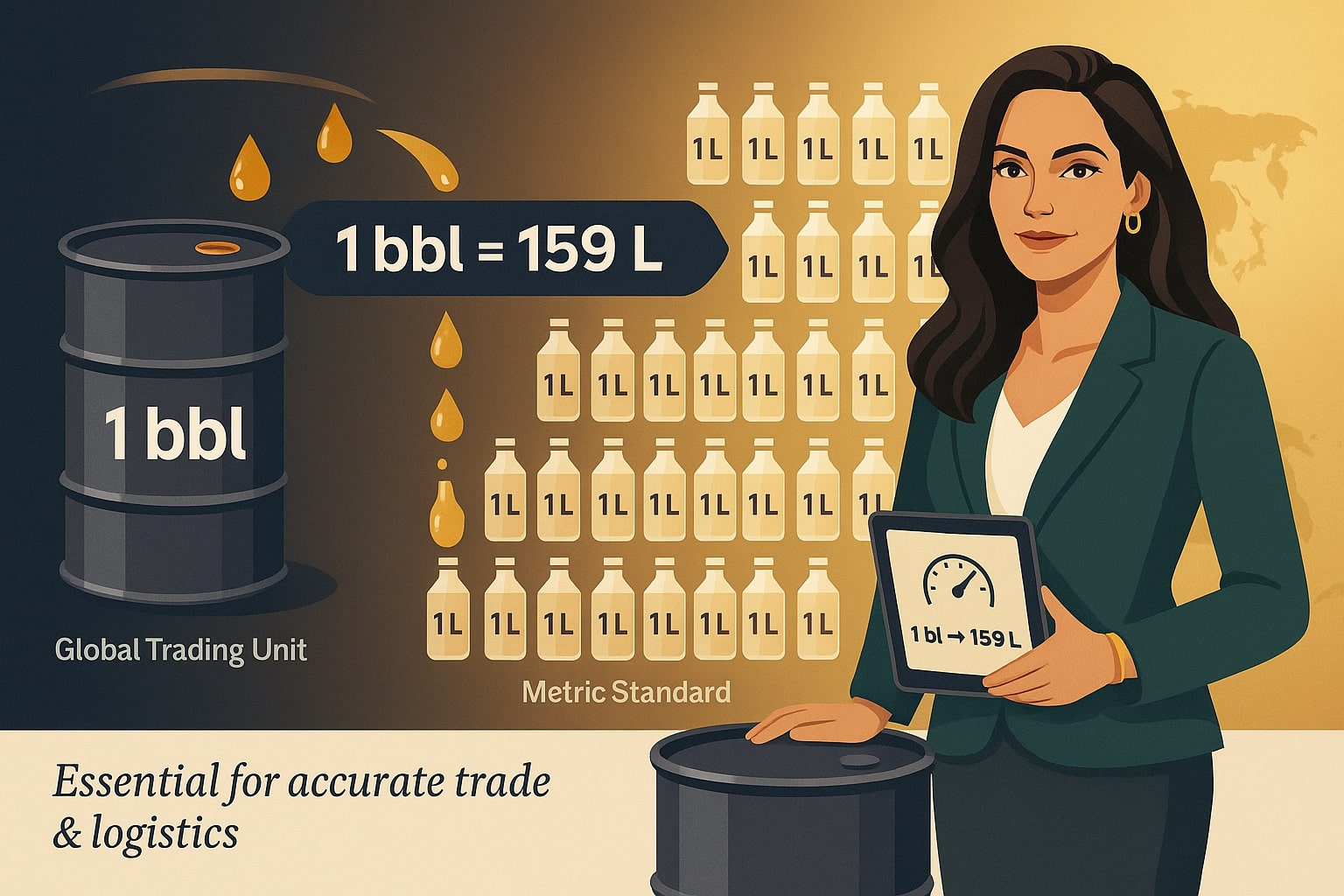Barrel (Oil) to Liter – How to convert bbl to L
Need to convert barrel (oil) to liter? If you’re working with fuel trade, shipping, or energy statistics, chances are you’ll run into barrels – but most countries, and most industries outside of oil, use liters as their standard volume unit. Since barrels aren’t part of the metric system, converting between the two is essential. Let’s break down the math, show how these units are used in practice, and share some surprising facts about the global oil trade.

What is a barrel (bbl) in the oil industry?
An oil barrel is a unit of volume traditionally used in the petroleum trade, equal to 42 U.S. gallons, or precisely 158.987 liters. It became the standard unit for crude oil pricing and sales in the 19th century, when Pennsylvania oil producers agreed to adopt it for consistency.
Even today, crude oil production, reserves, and prices are typically quoted in barrels, despite the fact that nearly every other liquid industry uses metric units.
What is a liter (L)?
A liter is the core metric unit for liquid measurement, equal to 1,000 milliliters (mL) or 1 cubic decimeter (1 dm³). It’s used worldwide in consumer goods, agriculture, and scientific work.
For oil and fuel, liters are often used for retail (like gas stations) and for comparing across industries, making it important to be able to translate from barrels to liters.
How to convert barrel (oil) to liter
Since 1 oil barrel equals 158.987 liters, the formula is:
Liters (L) = Barrels (bbl) × 158.987
Example: If a shipment contains 1,000 barrels of crude oil:
1,000 × 158.987 = 158,987 L
Rather not deal with big multiplications? Try our Volume Converter or check out other Conversion tools for instant results.
Did you know?
-
Global oil output: According to the International Energy Agency (IEA), the world produces over 100 million barrels of oil per day – that’s more than 15.8 billion liters daily when converted.
-
Historic origins: The “42-gallon barrel” became standard in 1866 when U.S. oil producers agreed on a single size to simplify trade. Before that, oil was shipped in a variety of casks and containers, causing chaos in pricing.
-
Price benchmarks: Oil is sold by the barrel, but refining, shipping, and retail fuel sales are typically tracked in liters, forcing energy companies to constantly convert between the two.
-
Strategic reserves: The U.S. Strategic Petroleum Reserve can hold up to 714 million barrels, which equals roughly 113.5 billion liters of oil – a volume large enough to fuel millions of vehicles for months.
The Unit Conversion That Powers Energy Markets
In global trading hubs like Rotterdam and Singapore, oil is bought and sold in barrels but stored and distributed in metric volumes like liters or cubic meters. According to a 2021 report from Platts Energy, traders rely heavily on precise barrel-to-liter conversions to calculate shipping weights, taxes, and refinery yields.
Even slight miscalculations can cost millions of dollars, especially when tankers carry over 2 million barrels of crude at a time. That’s why most trading desks keep automated tools handy – just like Jetcalculator – to avoid costly errors.

Wrapping It Up
Converting barrel (oil) to liter is as simple as multiplying by 158.987, but for the energy industry, this conversion is critical. From global trade to local fuel stations, knowing how to translate between barrels and liters keeps numbers accurate and decisions profitable.
For quick and reliable results, use our Volume Converter or explore other Conversion tools to make every calculation straightforward.

